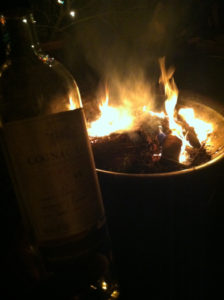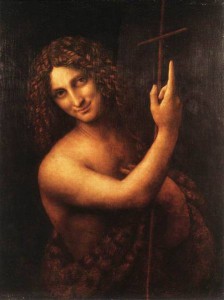All of our midsummer night’s revels and midsummer night’s dreaming of last night lead up to today: St. John’s Day, marking the birth of St. John the Baptist. We don’t typically celebrate the births of saints; all the other saints’ days mark the date of their deaths. But things are different with Mary and with John the Baptist. For them, we celebrate both. The Church early on placed the birth of John the Baptist at the Midsummer solstice and the birth of Jesus Christ at the Midwinter solstice. John is born at Midsummer, just as light begins to decrease. “He must increase, but I must decrease,” we read in John 3:30. Conversely, Christ is born at Midwinter, just as light begins to increase. Again, in John 8:12: “I am the light of the world.”
St. John is sacred to Puerto Rico, Québec, and Newfoundland. He is a patron saint of tailors, innkeepers, and printers like me. Tradition would have us cut and fashion divining rods on his day, for hidden treasures are thought to reveal themselves on St. John’s Day. Explore lonely places, it is said, and there these treasures shall be, awaiting any lucky finder. The magic passes with the day.
It is customary to eat strawberries on St. John’s Day, and in Estonia and Finland, a special St. John’s Day cheese is made, flavored with caraway seeds. Luckily no one has made a tradition of eating the foods that St. John himself is known to have eaten: “And his meat was locusts and wild honey” (Matthew 3:4). Try serving that at your next Midsummer dinner and watch your guests clear out in a hurry.
Image: Our St. John’s Eve bonfire last night, welcoming Old Midsummer. There may have been some Cognac involved. Afterward, I bound a pile of books and then cobbled together this Book of Days chapter. That may have been a result of the coffee before the cognac. The pile of books? Copies of Putting Up Mangoes, our tale of overwhelming subtropical abundance, which we’ll be featuring at the Midsummer Makers Marketplace at the Jaffe Center for Book Arts tomorrow, Saturday June 25, from 10 AM to 4 PM. If you come by, do say hello. Follow the roadsigns on campus to easy free parking. Admission is free, too!

